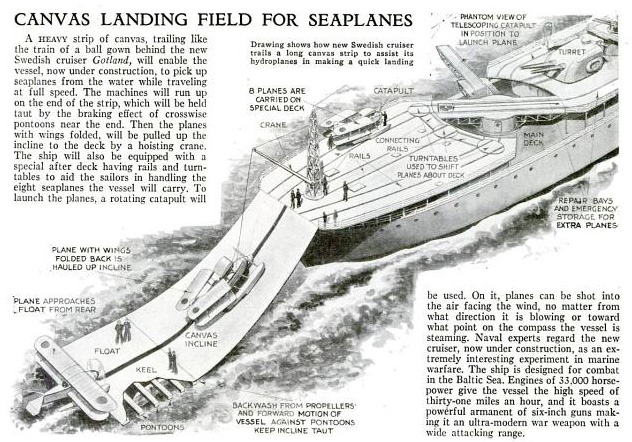

For as long as ships have been around, naval powers have competed for supremacy on the seas. After the steam engine’s invention in the 19th century, warship design underwent a major upheaval, culminating in an arms race for the best battleships and cruisers. Some of these ships went on to become famed World War I and II icons. Others never made it past the blueprint stage. You’ll find that when it comes to naval warfare, the Popular Science archives favor both the formidable and the funny speculations, as long as they contribute to a bright (Allied) future.
Click to launch the photo gallery.
World War I was the era of Dreadnoughts, or big-gun battle ships powered by steam turbines. During the interwar period, Great Britain and Germany emerged as the two leading contenders for naval supremacy. Even though the Treaty of Versailles limited Germany’s navy to a series of minor, weight-controlled ships, German engineers still managed to release a few deceptively lightweight vessels into Allied waters. Their heavily-armed pocket battleships changed history while serving during the Second World War, but for other projects, like Germany’s proposed submarine cruiser, the time simply wasn’t right.
Just because a ship didn’t make headlines doesn’t mean it couldn’t capture our imaginations. The interwar and postwar periods led us to wonder what the next great conflict would look like. Could we merge battleships and submarines? Could we design supercarriers capable of holding jet bombers? Two decades before the Navy promoted aircraft carriers to capital ship of the fleet, engineers experimented with a converted tanker that could dock airships in mid-flight. Italy, still years away from becoming a major Axis power, released plans for a semi-submersible equipped with 18-inch guns and a superstructure coated in cork.
Many of these ships never had their moment; others, like the battleship, dominated the seas only to become obsolete within a matter of decades. What can we say, some vessels simply work better on the page than on the sea, so click through our gallery to see World War I and II’s great ships in their prime.























